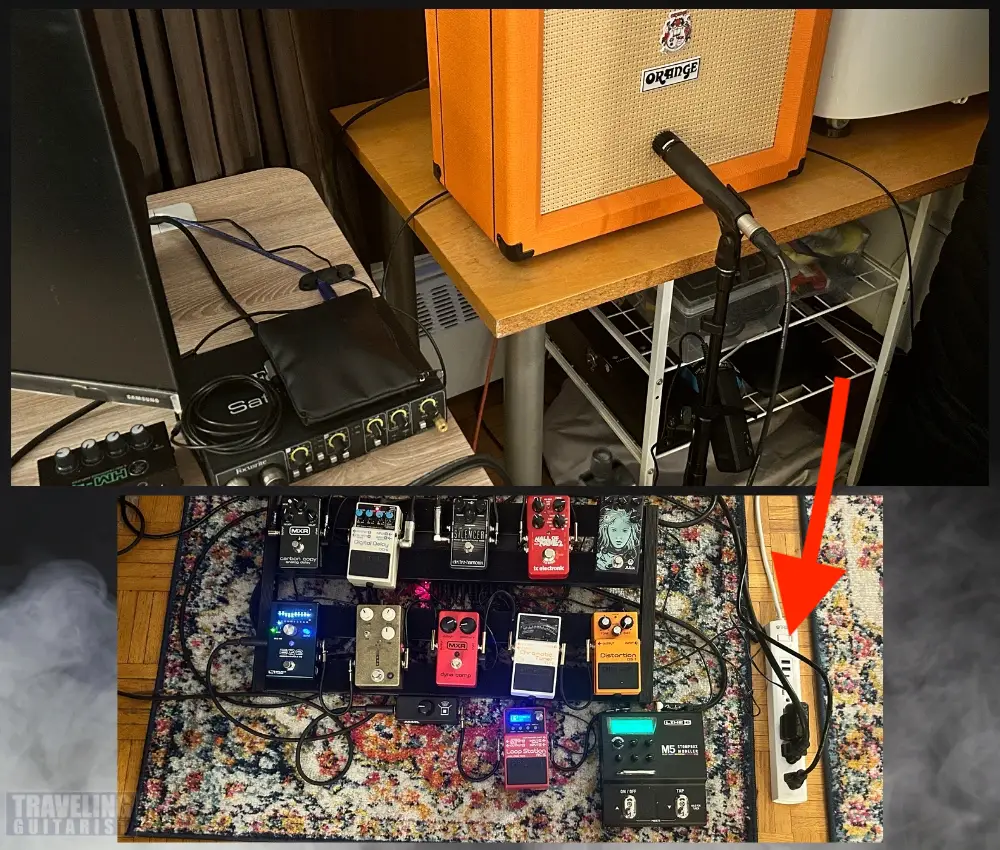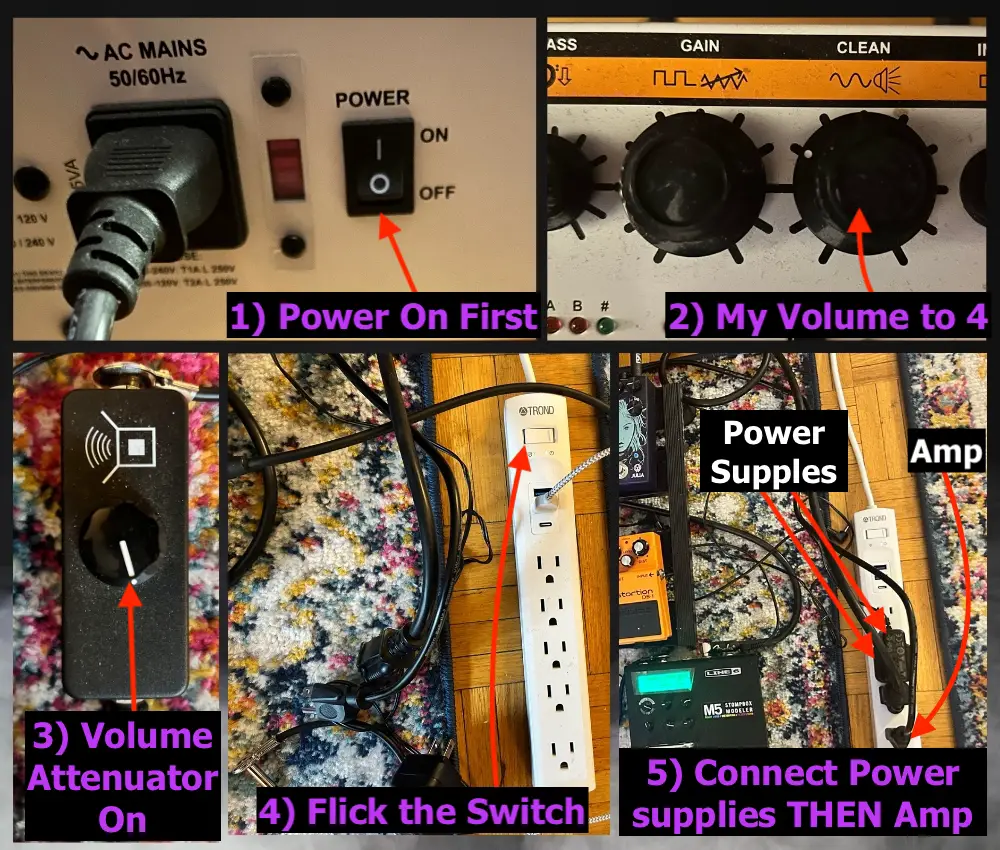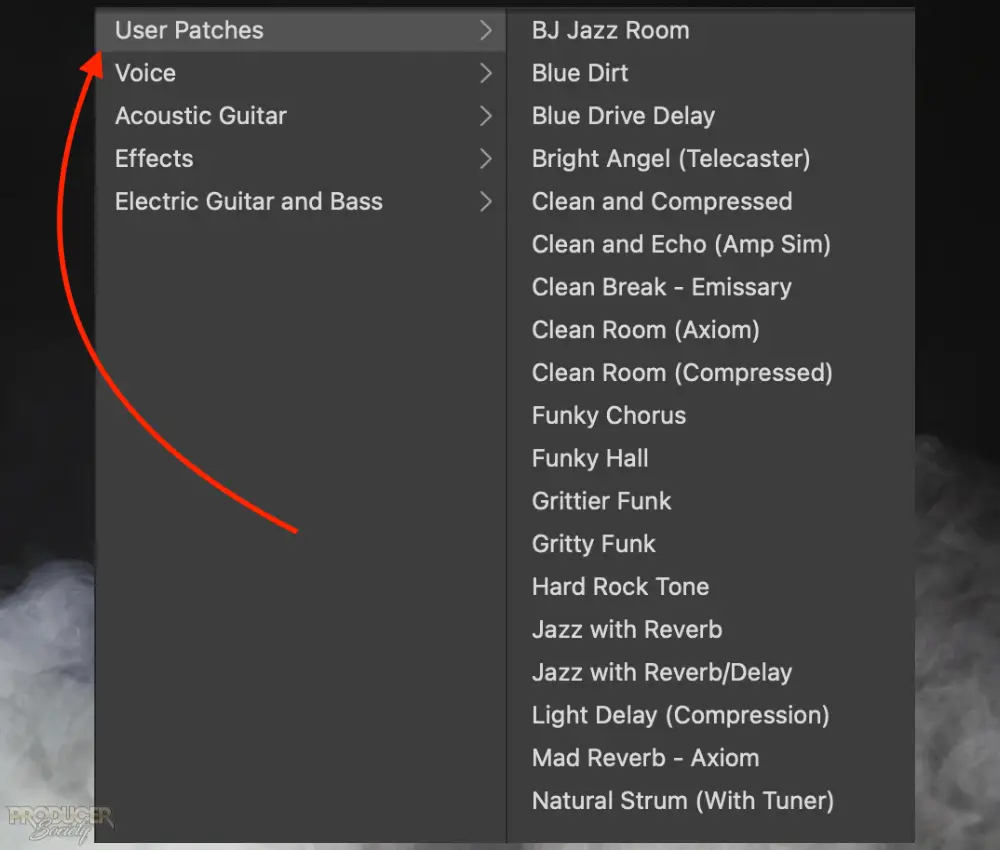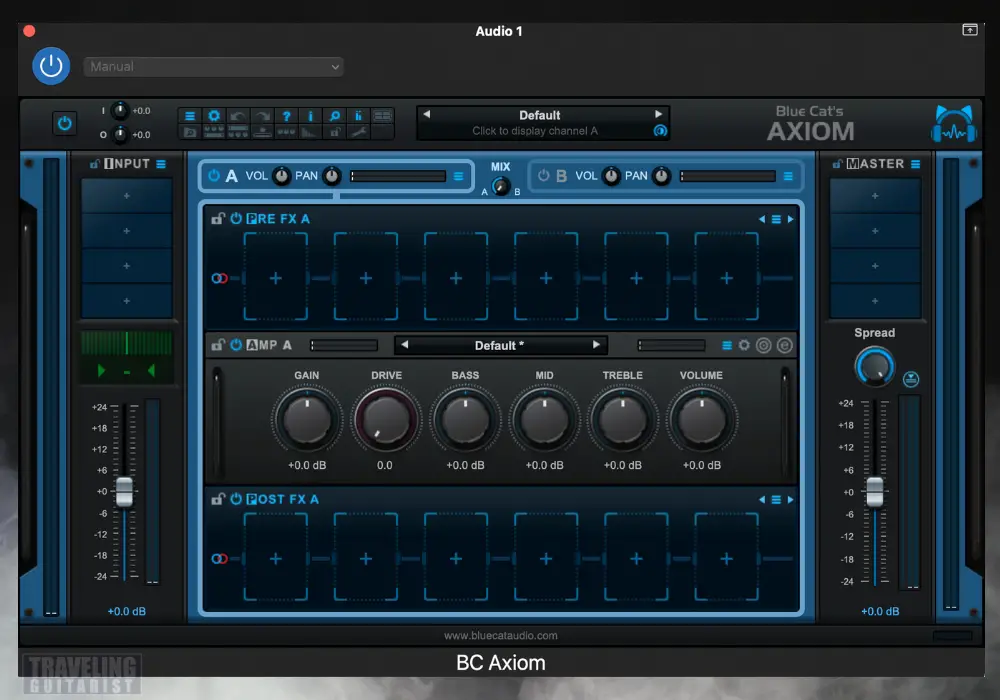The internet debate between real amplifiers and simulator plugins continues every day. There are solid reasons why one may choose one over the other. Personally, I like both.
However, I use my real amplifier significantly more than the amplifier plugins I own, including the Blue Cat Audio Axiom, Guitar Rig Pro, Amplitube 5, and ToneStackPRO. There’s a simple and practical reason for this.
The reason I prefer to use real amplifiers over amplifier simulators is that it takes me only 10-15 seconds to get set up with my amp, pedals, and my guitar. And that’s it.
I’m a pragmatic kind of guy. If you’re looking for a super scientific, esoteric, and artistic reason, then you’re in the wrong place.

Having my gear configured in this way ensures that it takes me only a couple of seconds to start playing the guitar.
By having my amplifier and power supplies connected to a power-bar, I can essentially leave everything turned on and plugged in at all times.

The power bar also acts as a surge protector so I don’t have to worry about a thunderstorm destroying my equipment.
When an idea strikes and I want to start playing, or if I just want to start messing around, it’s as simple as flicking the switch and grabbing my guitar. Sometimes I have to plug the guitar in first.
It’s worth noting that you can set up lighting systems and cameras in the same way. With a flick of a switch, your amp, pedals, lights, and camera are engaged and you can start playing and recording for social media.
The same thing cannot be said for using a computer, tablet, or smart phone and the accompanying amplifier simulators and DAWs (although, I’m sure a person with serious technical knowledge would have a way).
When I use a plugin, I have to:
– turn on my computer
– wait for it to load
– turn on my DAW
– get my audio interface ready
– adjust the gain and ensure other parameters are configured correctly
– and then I have to load the plugins in the DAW.

Saved presets and patches are awesome for this, for sure, but it’s all fairly time-consuming.
Once this entire process has finished, probably 5 minutes have passed. By this time, all my creativity and drive to play the guitar and record has already vanished. Or I’ve forgotten the idea I had.
Simply put, I find that a traditional guitar amplifier and the pedalboard combination is so easy to start using. It reduces the friction between setting up all of your equipment and then playing and recording the instrument.
And really that’s the only reason why I prefer my guitar amplifier, guitar pedals, and pedalboard over most amplifier simulators and plugins.

That all said, I have no issue at all with amp sims and I purchase and use them all of the time. I also think that within a few years, they will be better than the real thing. That’s just the way the world is going.
But you can’t beat the convenience and reliability of a traditional set-up. It’s just too easy to set-up and there are no updates or complications that come from having to use a computer, a DAW, and a bunch of plugins.
No storage space issues. No crashing plugins. There is none of that. Everything just works without a problem and you can play as much as you want.
Not to mention that some of these high-quality pedals and equipment will last decades. I have a DigiTech Whammy Pedal IV that I bought almost 20 years ago and it works fine. I still use it and I just made a video about it as well.
Another thing I like about real pedals and amplifiers is that I enjoy the physical interaction with the equipment. It feels like I’m more connected with the sounds I’m producing.
This isn’t a huge selling point for me, but I have to admit there is something there that makes it more fun for me.
The resale value of some of this equipment is worth mentioning as well. I could probably sell the Whammy IV I just mentioned on eBay or Amazon for a couple hundred dollars, despite its age.
Is it possible some of this stuff will have no monetary value in 50 years? Yeah, but I don’t foresee that happening anytime soon. Have a look at a used Whammy IV on eBay, a TCE Ditto X2, or even a BOSS DS-1.
With the exception of the Ditto X2, these pedals are extremely old, especially the DS-1. Yet they still fetch a reasonable price used. The WH-1 (the first Whammy Pedal) goes for $375-$800US.
I’m curious to know what your thoughts are though. Do you like guitar amplifiers and pedals more than amp sims? Or do you think the versatility of DAWs and plugins are unmatched?
Another question I have for you is how you’ve set up your equipment? Do you think there is a better way to reduce the friction point between setting up your equipment and playing the guitar?


 Written By :
Written By :
